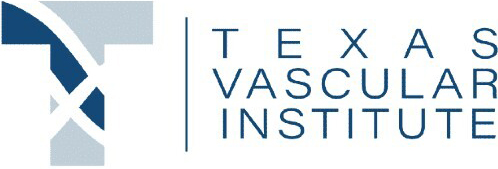By: Dr. Dev Batra | 01.29.23

Your circulatory system is a complex network of blood vessels that delivers oxygenated blood and nutrients to your body’s tissues and returns deoxygenated blood back to your heart. The arteries take care of the former, and the veins are responsible for the latter.
Veins, though, in some ways have the harder task — they have to move the blood against the pull of gravity from the feet up to your chest. With so much work, is it any wonder vein diseases are so common?
According to interventional radiologist Dr. Dev Batra at Texas Vascular Institute in Dallas and Hurst, Texas, vein conditions, including varicose veins, chronic venous insufficiency, and deep vein thrombosis, affect nearly 70% of the population in some form.
Dr. Batra specializes in screening for, diagnosing, and treating vein issues and is passionate about the work he does. To help his patients understand their risks for developing vein disease, he’s put together this guide.
Venous insufficiency, varicose veins, and chronic venous insufficiency (CVI)
In this section, we detail three common vein diseases.
Varicose veins
Varicose veins are a common — and well-known — vein disease, affecting up to 3 in 10 adults, most of them being women over 50. When not treated, they’re also one of the major risks for venous insufficiency becoming chronic venous insufficiency (CVI).
The veins’ Herculean task is aided by two factors: the calf muscles that contract to force the blood forward, and the one-way valves that snap shut once the blood has passed.
You may experience some symptoms with the varicose veins, such as pain, itchiness, and a “heavy” feeling, but varicose veins alone are not dangerous.
The risks for varicose veins include:
- Being female
- Being over 50
- Being overweight, obese, or pregnant
- Smoking
- Standing or walking for extended periods
Chronic venous insufficiency
If the wall of a vein becomes damaged or weakened, say because of too high blood pressure or plaque formation, the valve may not be able to close properly. That means the blood is free to backtrack, and it often pools around the damaged area, causing thick, ropy, colored bulges on your legs — varicose veins. The condition underlying the varicose veins is called venous insufficiency.
Chronic venous insufficiency (poor circulation) is indicated by the progression of the following symptoms:
- Flakey or itchy skin on the lower legs
- Leathery or shiny skin
- Swelling in the lower legs and ankles (edema)
- Skin discoloration (venous stasis dermatitis)
- Slow-healing ulcers (open wounds) on the lower legs, ankles, or feet
Risk factors for CVI include:
- Heart disease, especially atherosclerosis: plaque formation impedes blood flow
- Leg trauma
- A sedentary lifestyle
- Multiple pregnancies
- Superficial vein swelling (phlebitis)
- Prior cases of deep vein thrombosis (DVT) or a family history

Deep vein thrombosis (DVT)
Unlike varicose veins, which affect the surface veins, DVT develops when a blood clot forms in one of your deep veins. It usually occurs in the leg, but it can also form in the arms or pelvis.
DVT is a potentially dangerous health condition. If the blood clot breaks off, it can travel through the bloodstream into your lungs, causing a pulmonary embolism, a life-threatening emergency. If a clot breaks off from elsewhere in your body, it can lead to a stroke.
Warning signs of DVT include:
- Leg, ankle, or foot swelling
- Cramping in the calf muscles
- Severe, unexplained pain in the foot and ankle
- Skin warmer to the touch than the surrounding area
- Skin that appears pale blue or red over the clot area

Risk factors for DVT include:
- Age: men between 45-60 are especially susceptible
- Major surgery or trauma, especially to the stomach, pelvis, or leg
- Hospital stays (bed rest) over three days
- Immobility or paralysis
- Medications containing estrogen
- Pregnancy or recent delivery
- Obesity
- Chronic medical conditions (inflammatory bowel disease, lupus, clotting disorders)
- Cancer
- Previous venous thromboembolism (VTE): about 30% of those who’ve had DVT get it again
If you have any of the risk factors for vein disease, it’s time to see a specialist. Dr. Batra and the Texas Vascular Institute team boast cutting-edge diagnostic tools and treatments available to decrease your risk and treat your problems. Give the office a call at 972-646-8346 to set up a consultation or book online with us today.
Read more blogs
Varicose Veins in Hurst: Expert Care at Your Doorstep
At Texas Vascular Institute (TVI), we empathize with the discomfort and worry caused by varicose veins. That's why we're here in Hurst, providing cutting-edge treatments that are customized to address your unique needs. With our team of experts wielding extensive knowledge and experience, we promise to provide the utmost care in a warm and compassionate atmosphere. Let us help you find relief and regain your confidence!
Varicose Veins in Dallas: Quality Care You Can Trust
Our exceptional team of vascular specialists are true leaders in their field, armed with years of invaluable experience. Harnessing the power of cutting-edge advancements in vein treatment, they've transformed the lives of numerous patients, liberating them from the pain and unsightly burden of varicose veins. When you choose TVI, you're opting for unparalleled care and unwavering commitment to your varicose vein needs in Dallas.
How to Get Rid of Varicose Veins in Hurst?
The causes and risk factors of varicose veins vary from genetics to age, pregnancy, obesity, and prolonged standing or sitting, among other factors. Some typical signs and possible issues include discomfort, inflammation, irritation, hemorrhage, dermatological alterations, sores, and thrombosis. You may want to seek medical attention if you experience any of the following symptoms or complications.
WHAT OUR PATIENTS
have to say
Texas Vascular Institute always appreciates feedback from our valued patients. To date, we’re thrilled to have collected 378 reviews with an average rating of 5 out of 5 stars. Please read what others are saying about Texas Vascular Institute below, and as always, we would love to collect your feedback.
Leave a Review
Amazing Practice
I'm very particular with my Healthcare and tend to be cautious with referrals to specialists. This office is amazing from the first point of contact. Their staff are friendly, professional and highly knowledgeable. Then the Dr is just as amazing as his staff, absolutely brilliant. Office manager Jessica has this office running like a well oiled machine and does so with a smile, an air of confidence, kindness and professionalism. Love this practice!!
- Richard G.

Beyond Thankful
Dr Batra and his staff are amazing! We are so grateful to have found him. Everyone is so kind and so caring and Dr Batra explains everything so well and does procedures with excellence. Beyond thankful to be under their care!!!
- Bitsy P.

Gold Standard
This is a gold standard for how a medical practice should be run. I was promptly seen at my scheduled time, my ultrasound was thorough and I received plenty of attention and care from the staff and Dr.Batra.
- Weronika L.
INSURANCE
We accept most major insurance plans. Please contact the medical office for all insurance related questions.









3500 Oak Lawn Ave, #760
Dallas, TX 75219
For Appointments: 972-798-4710
General Inquiries: 972-646-8346

809 West Harwood Rd, Suite 101,
Hurst, TX 76054
For Appointments: 972-798-4710
General Inquiries: 972-646-8346

